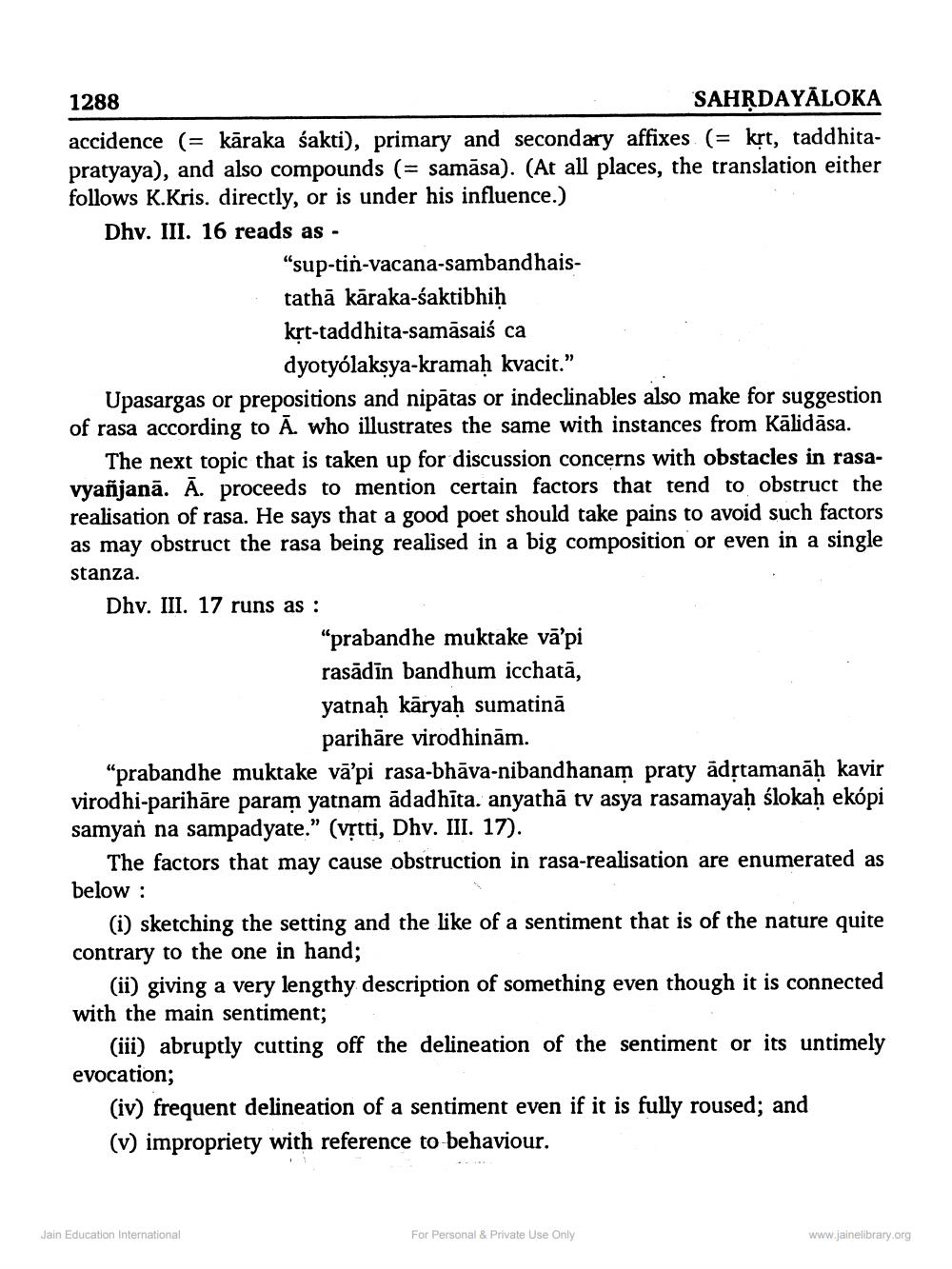________________
1288
SAHRDAYALOKA accidence (= kāraka sakti), primary and secondary affixes (= krt, taddhitapratyaya), and also compounds (= samāsa). (At all places, the translation either follows K.Kris. directly, or is under his influence.) Dhv. III. 16 reads as -
"sup-tin-vacana-sambandhaistathā kāraka-Śaktibhiḥ krt-taddhita-samāsaiś ca
dyotyólaksya-kramaḥ kvacit." Upasargas or prepositions and nipātas or indeclinables also make for suggestion of rasa according to Ā. who illustrates the same with instances from Kālidāsa.
The next topic that is taken up for discussion concerns with obstacles in rasavyañjanā. Ā. proceeds to mention certain factors that tend to obstruct the realisation of rasa. He says that a good poet should take pains to avoid such factors as may obstruct the rasa being realised in a big composition or even in a single stanza. Dhv. III. 17 runs as :
“prabandhe muktake vā'pi rasādīn bandhum icchatā, yatnaḥ kāryaḥ sumatinā
parihāre virodhinām. "prabandhe muktake vā’pi rasa-bhāva-nibandhanam praty adrtamanāh kavir virodhi-parihāre param yatnam ādadhīta. anyathā tv asya rasamayah ślokah ekópi samyan na sampadyate.” (vịtti, Dhv. III. 17).
The factors that may cause obstruction in rasa-realisation are enumerated as below :
(i) sketching the setting and the like of a sentiment that is of the nature quite contrary to the one in hand;
(ii) giving a very lengthy description of something even though it is connected with the main sentiment;
(iii) abruptly cutting off the delineation of the sentiment or its untimely evocation;
(iv) frequent delineation of a sentiment even if it is fully roused; and (v) impropriety with reference to behaviour.
Jain Education International
For Personal & Private Use Only
www.jainelibrary.org




